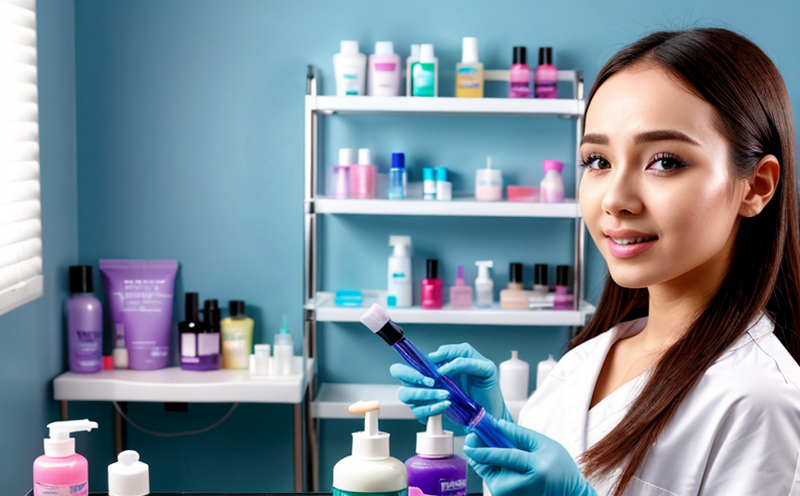FDA BAM Cosmetic Microbiological Testing Guidelines
The FDA's Bacteriological Analytical Manual (BAM) provides guidelines and methodologies for microbiological testing in the cosmetic industry, ensuring that products are safe for consumer use. Compliance with these guidelines is crucial for manufacturers aiming to meet regulatory standards and prevent contamination risks.
Microbiological testing involves a series of steps designed to detect and quantify microorganisms present in cosmetic samples. These tests help identify potential sources of contamination, assess product stability, and ensure that the final products are free from harmful pathogens. The BAM guidelines outline specific procedures for sampling, sample preparation, culture media selection, incubation conditions, and analytical methods.
The FDA emphasizes the importance of accurate and reliable microbiological testing in cosmetic manufacturing. Failure to adhere to these standards can lead to product recalls, legal actions, and reputational damage. By following the BAM guidelines, manufacturers can demonstrate their commitment to quality and safety, thereby building consumer trust and maintaining compliance with regulatory requirements.
The BAM guidelines cover various aspects of microbiological testing, including:
- Bacterial counts
- Pathogen detection (e.g., Salmonella, Listeria)
- Fungal and mold counts
- Microbial limit tests
In addition to these core aspects, the BAM also provides detailed protocols for handling samples, maintaining laboratory conditions, and interpreting results. These procedures ensure that the testing process is standardized across different laboratories, leading to consistent and accurate outcomes.
The FDA's focus on microbiological safety in cosmetics extends beyond just the manufacturing phase. Post-market surveillance plays a critical role in identifying potential issues with products already on the market. Through regular monitoring and sampling of finished goods, regulators can quickly respond to any emerging threats. This proactive approach helps protect consumers from potentially harmful contaminants and maintains public health standards.
Compliance with FDA BAM guidelines is essential for ensuring that cosmetic products meet strict hygiene and safety criteria. By adhering to these protocols, manufacturers not only safeguard their reputation but also contribute significantly to consumer protection.
Benefits
Adhering to FDA BAM guidelines offers numerous benefits for cosmetic and personal care product manufacturers. These include:
- Enhanced Consumer Trust: Demonstrating adherence to rigorous testing standards builds confidence among consumers regarding the safety of your products.
- Avoidance of Legal Issues: Compliance reduces the risk of legal disputes and potential financial losses associated with non-compliance.
- Innovation Support: Rigorous testing helps identify areas for improvement, fostering continuous innovation within the product development lifecycle.
- Maintaining Reputational Integrity: Consistent quality ensures that your brand remains respected and valued by both industry peers and consumers alike.
Environmental and Sustainability Contributions
Incorporating FDA BAM guidelines into daily operations can have positive implications for environmental sustainability. By minimizing contamination risks, manufacturers reduce waste generation and energy consumption associated with reprocessing or discarding contaminated batches.
The use of advanced microbiological testing techniques allows companies to optimize resource usage more effectively, promoting sustainable practices throughout the supply chain. Furthermore, by ensuring high standards in raw material procurement and final product quality, firms can contribute positively towards reducing overall environmental impact.
Moreover, adhering strictly to FDA BAM guidelines fosters responsible manufacturing behaviors that align closely with broader sustainability goals. This commitment not only enhances corporate social responsibility efforts but also positions organizations favorably within competitive markets where eco-friendly credentials are increasingly valued by consumers worldwide.
Use Cases and Application Examples
| Test Case | Description |
|---|---|
| Bacterial Count in Moisturizers | Determining the presence and quantity of bacteria present in moisturizer samples using appropriate culture media and incubation conditions. |
| Pathogen Detection in Shampoos | Identifying specific pathogens such as Salmonella or Listeria in shampoo formulations to ensure they do not pose health risks. |
| Fungal and Mold Counts in Conditioners | Evaluating the levels of fungi and molds within conditioner products, ensuring no adverse effects on skin or hair health. |
| Microbial Limit Tests for Perfumes | Conducting tests to ensure that perfume samples do not exceed permissible microbial limits set by regulatory bodies like the FDA. |





